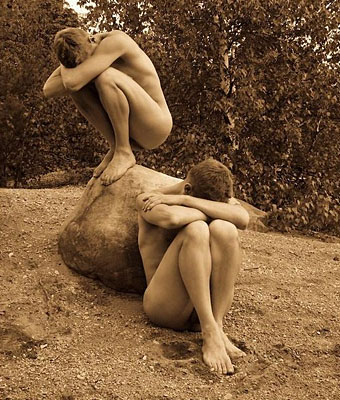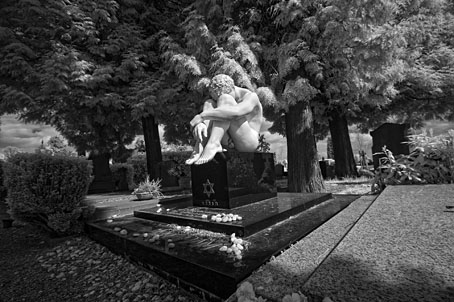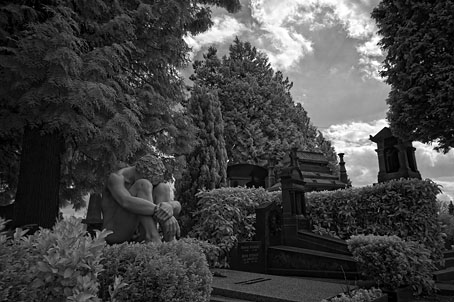More from the pose that keeps on giving. Big thanks to Lance for sending the photos above and below which identify the Flandrinesque figure from post no. 22 not as a sculpture from Hermosa Beach but a memorial statue in the Cimetière d’Ixelles, Brussels. The eternal hazard of web photos is the erroneous or missing attribution, something I do my best to avoid.

And speaking of missing attributions, that’s what we have here. This site may be the origin although I’ve seen an earlier page with the same photo. Nice boys, anyway. Thanks to Hal for the tip!
Elsewhere on { feuilleton }
• The recurrent pose archive



Is it possible that the recurrent pose in Cimetière d’Ixelles is a Holocaust memorial? Or some other prominent aspect of Jewish life? If so, then is the statue properly endowed in the religious/cultural sense?
Well, that aside, does full frontal naked male statuary usually include foreskin, or is that just because so much is from Greco-Roman times?
It looks more like a family monument to me, I think something as weighty as a Holocaust memorial would be in a space of its own. The closer view of the statue on the earlier post looks like it might be circumcised although it’s not clear either way. It’s also the case that circumcision isn’t a common thing in Europe unless you’re Jewish, Muslim, etc. (Or have undergone surgery in later life.) An interesting problem, actually: ordering a funeral sculpture isn’t really the time to be talking genital details.
European statue is generally uncircumcised for the above reasons, when the gonads aren’t hidden by convenient drapery. In more prudish times that helped reduce the amount of distracting detail, in the same way that nipples in statues of women are seldom defined at all. Vases and plates from Ancient Greece (and some of the statues) tend to depict the penis with a tapered foreskin.
Would you consider Ron Mueck’s Boy to be an iteration of the Recurrent Pose?
No, that’s more of a crouch. That’s also true of the boy on the rock above but there’s another figure present who’s closer to the pose in question. I try to limit these associations to those which most closely approximate Flandrin’s painting otherwise you’d end up with things being drawn in from all over.